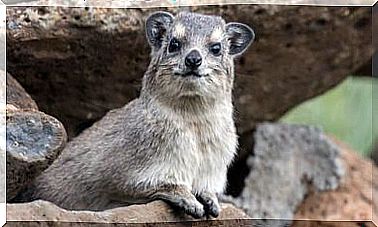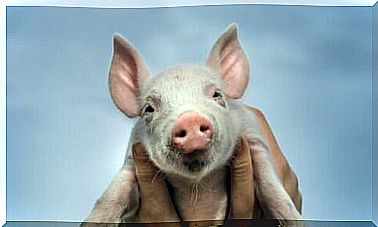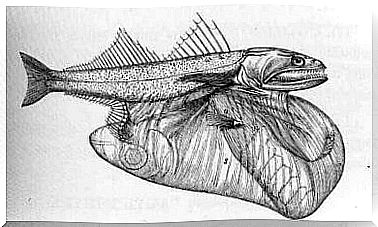Pacific Giant Octopus: Features, Habitat And More Information
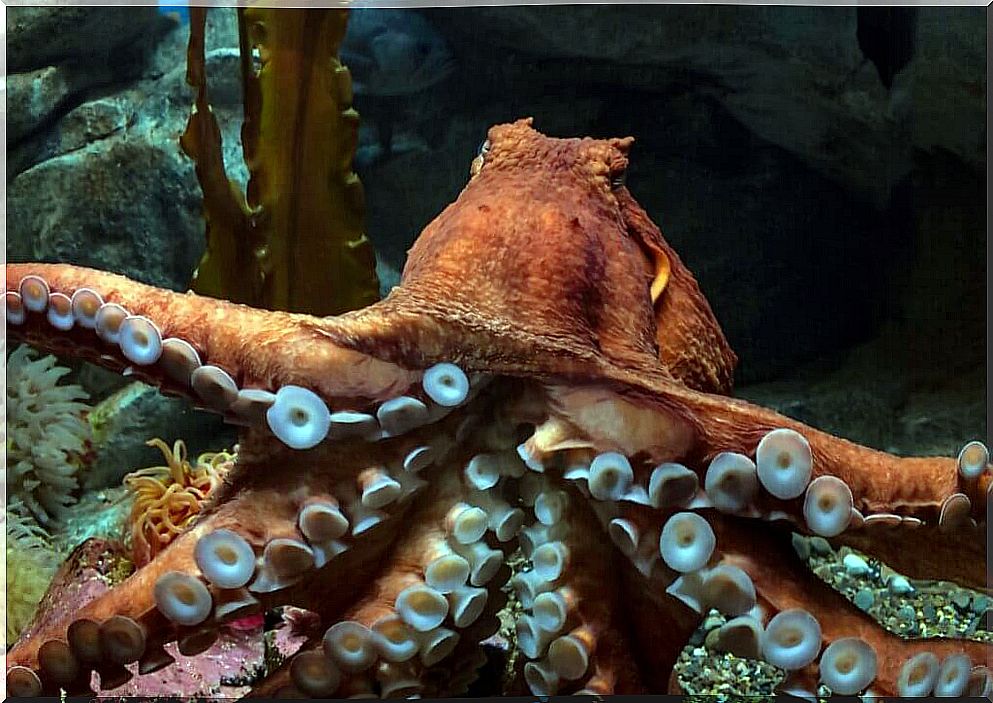
Octopuses are one of the most striking animals that can be found in the marine environment. Their intelligence is unmatched among invertebrates and is off-center, so they can “think with their arms.” The Giant Pacific Octopus is a clear example of this.
Furthermore, these cephalopods have developed a vision system similar to that of vertebrates – despite having followed a completely different evolutionary path – and are capable of changing color and texture, which makes them true masters of camouflage.
Next, we’ll talk about the biggest octopus ever discovered, the Pacific Giant Octopus or Enteroctopus dofleini. Stay with us if you want to learn more about this amazing animal.
Physical characteristics of the Pacific Giant Octopus
The giant Pacific octopus stands out from the rest for its enormous size. Most species of octopuses are small, but this one reaches an average of 5 meters and weighs about 50 kilos. Much larger individuals were found, over 9 meters and 272 kilos.
This animal is composed of the characteristic parts common to all octopuses. On one side we have the huge bulbous head, which contains 2 eyes, brain and most of Organs internal organs.
On the other hand, there are 8 tentacles or arms, which in this species can measure from 2 to 4 meters. These are joined by a membrane in the section closest to the body and covered by 2 rows of suction cups. Each octopus can have more than 2000 suction cups in total.
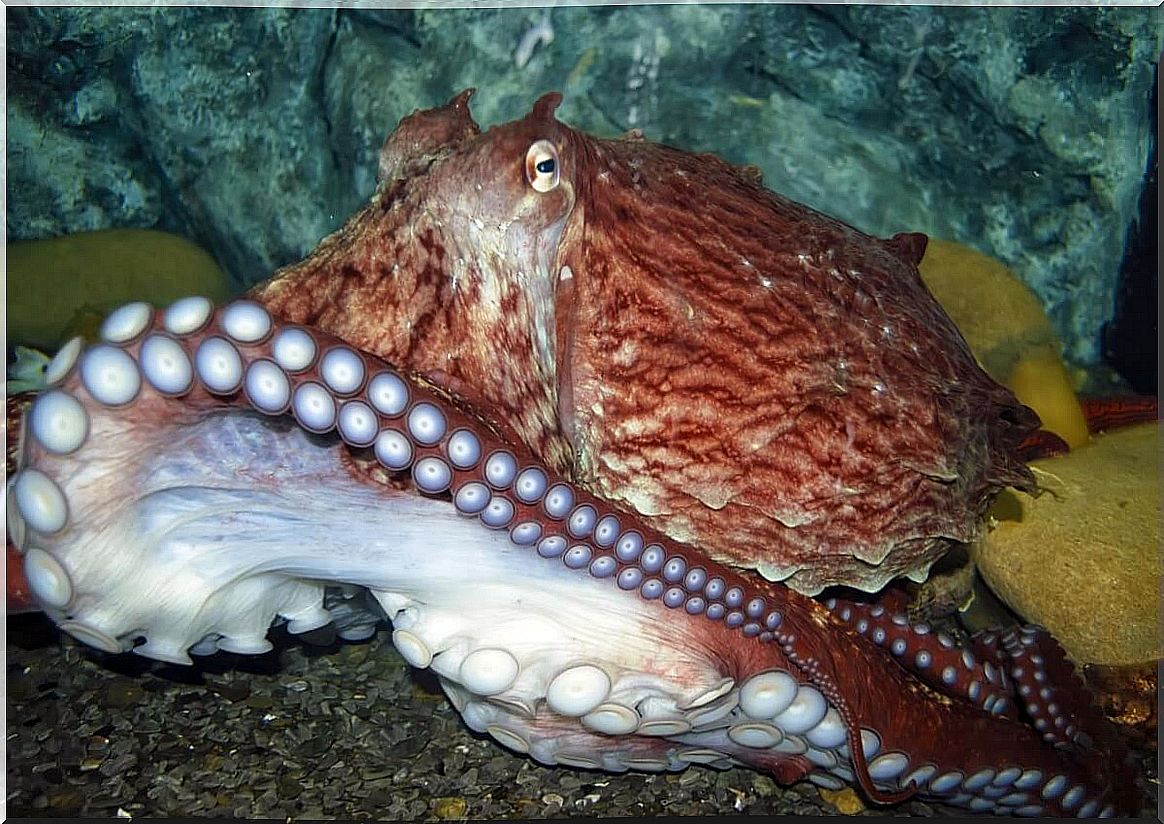
These cups are structures capable of attaching incredible strength to all types of surfaces and prey, but they also have sensitive endings that allow you to smell and taste the substances to which they attach.
Octopuses also have a siphon, through which they expel water like a jet to achieve high speeds. At the center of the tentacles is the mouthpart, composed of the pointed beak of a parrot, behind which is the peculiar radula, typical of molluscs.
These octopuses are usually rough, brick-red on top and pale underneath, with white suckers. Of course, being masters of camouflage, that could change. Thanks to the specialized cells in your skin, they can change their color and texture at will.
Habitat and distribution area
The Pacific Giant Octopus is exclusively marine. Its distribution area consists of the coastal waters of the northern Pacific Ocean. Therefore, countries like Japan, Korea, Russia, Canada, the United States and Mexico have populations of this cephalopod.
The depth at which this species appears varies greatly throughout its distribution. Populations further north can be seen on intertidal reefs on the surface, while those in the south live up to 1500 meters deep.
Giant Pacific Octopus Ecology
The reproduction of the giant Pacific octopus occurs in the summer. During autumn and winter, females lay up to 100,000 eggs, which they attach to solid surfaces in rows.
The females take good care of the eggs for months, until they hatch. During this period, the mothers do not eat, so they end up dying right away. Larvae are tiny at first and are part of plankton, but they develop very quickly.
food
The Giant Pacific Octopus is a nocturnal predator. Their diet consists mainly of other molluscs – especially bivalves or gastropods – and decapod crustaceans – crabs and their relatives. However, it can also consume sea urchins, fish and even sea birds.
These octopuses approach prey with the help of camouflage and the speed gained with their siphon. After a series of quick movements, they scoop up their victims with suction cup arms and carry them to their lair.
Once there, these cephalopods are able to open the extremely hard shells of their prey with their tentacles or, alternatively, can pierce with their beaks. In addition, they have a toxic secretion that paralyzes prey and starts decomposition. Once the victim is consumed, the octopuses accumulate the shells and shells in a pile.
Despite their size and defenses, these molluscs are soft and also have predators. The main vertebrates that feed on them are sharks, seals, sea lions or large fish, among others.
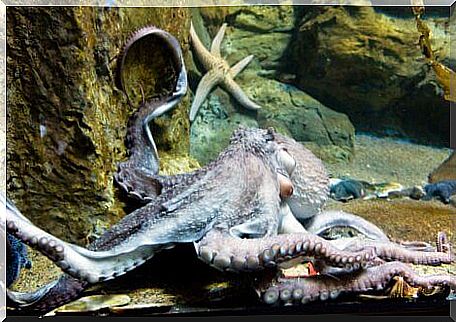
These animals are under great pressure from overfishing and threatened by pollution and acidification of the oceans. Fortunately, they produce so many offspring and have such a wide distribution area that they don’t seem to be threatened. However, it is necessary to gather more information to ensure its conservation status.



